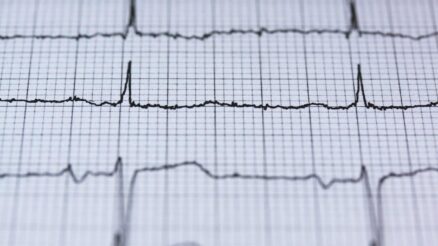Your grandma may have called your heart “your ticker,” but that nickname is inaccurate. A healthy heart does not beat with the precision of a clock. It accelerates and decelerates to match your shifting oxygen requirements as your activities change throughout the day. What constitutes a “normal” heart rate differs from person to person. However, a very high resting heart rate or a meager maximum heart rate may indicate a greater risk of heart attack and mortality.
Checking one’s resting heart rate is a simple thing that everyone can accomplish. It’s a straightforward process, and knowing the knowledge can be beneficial in the long run. Taking your pulse frequently allows you to determine what’s normal for you and spot any odd changes in rate or regularity that may require medical care.
Your Resting Heart Rate
The least amount of blood is pumped by your heart when you are at rest to provide your body with oxygen. Resting heart rates for most healthy adult women and men range from 60 to 100 beats per minute. It is thought that a heart rate at the low end of that range might reduce the risk of heart attacks.
Researchers discovered that those with the highest resting heart rates—more than 76 beats per minute—were 26 percent more likely to have a heart attack or die from one than those with the lowest resting heart rates—62 beats per minute or less.
Suppose your resting heart rate is consistently higher than 80 beats per minute. In this case, you should ask your doctor how your heart rate and other factors affect your risk for cardiovascular disease.
Your Heart Rate During Or After Walking
Walking, on the other hand, is a low- to moderate-intensity activity. Depending on how quickly you walk, your heart rate will rise or fall. You may measure your intensity during any activity, even strolling, using target heart rate zones for moderate and high-intensity exercise.
When you exercise at a moderate intensity (such as walking or running), your heart rate will be between 50 and 70% of your maximum heart rate. In contrast, strenuous activity will be between 70% and 85% of your maximum heart rate.
To estimate your goal heart rate zone while walking, first, calculate your maximal heart rate or the number of times your heart beats per minute. Subtraction of your age from 220 is the standard calculation for estimating maximal heart rate.
To calculate your target heart rate for various exercise intensities, multiply your maximal heart rate by a percentage. For example, to get 50 percent of your maximum heart rate, multiply your maximum heart rate by 0.5.
You can perform the math yourself, or you can consult the healthcare provider. For example, if you are 35 years old, your average maximum heart rate is around 185 bpm, whereas your goal heart rate zone during exercise (50 to 85 percent of maximum heart rate) is around 93 to 157 bpm.
However, these figures are far from definitive, so use them only as a rough reference.
Wearable technologies, such as heart rate monitors and fitness trackers, make it simple to monitor your heart rate while exercising. Otherwise, you’ll have to watch your pulse while walking manually, which can be difficult.
Factors Affecting Heart Rate
When the temperature (and humidity) rises, the heart pumps a bit more blood, so your pulse rate may increase, but normally no more than five to ten beats per minute.
Body position: Whether you’re lying down, sitting, or standing, your pulse is usually the same. Your pulse may rise slightly during the first 15 to 20 seconds of standing, but it should return to normal after a few minutes.
Emotions: When you’re pressured, apprehensive, or “extraordinarily happy or sad,” your emotions might cause your heart rate to rise.
Size of the body: The size of a person’s body does not normally affect their pulse rate. If you’re obese, you might have a more significant resting pulse than usual, but it shouldn’t be more than 100.
Medicine use: Adrenaline-blocking medications (beta-blockers) tend to reduce your pulse, whereas too much thyroid medication or a high dose will elevate it.
How to take your pulse?
Here’s how to measure your heart rate if you’re not sure how:
- Place the tips of your index and middle fingers on the inside of your left wrist and press them together until you feel a pulse. Please don’t use your thumb to measure your pulse because it has its pulse. This could result in an incorrect reading.
- For 30 seconds, look at a clock or watch and count the number of beats you feel with your fingertips.
- Once you have that figure, divide it by two to get your bpm. So, if you counted 55 beats in 30 seconds, your heart rate is 110 beats per minute (55 x 2).
Book an appointment now to answer all your queries. You can book an appointment with the top Cardiologists in Karachi through Marham by calling Marham helpline: 0311-1222398 or by online booking facility through the website or Marham mobile app.
Frequently Asked Questions(FAQs)
1- When standing and walking, what is a typical heart rate?
When at rest, a person’s heart rate is typically between 70 and 80 beats per minute. Usually, when one stands up, the heart rate jumps by 10 to 15 beats per minute and then returns to normal.
2- What is the usual heart rate following exercise?
Subtract your age from 220 to determine your maximal heart rate. Subtract 45 from 220 to obtain a maximum heart rate of 175 if you are 45 years old. This is the maximum rate at which your heart should beat per minute on average during exercise.
3- What is a dangerous heart rate?
Consult your physician if your heart rate is routinely greater than 100 beats per minute or less than 60 beats per minute (and you are not an athlete) and you are feeling shortness of breath.


